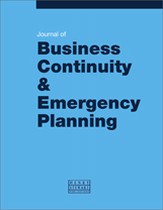Strengthening tsunami maritime response and mitigation through inclusive stakeholder engagement: Lessons learned in Washington State
Abstract
Among the most vulnerable facilities to tsunami impacts are ports, harbours and marinas. The ability of maritime infrastructure to withstand a disaster and resume operations quickly plays a major factor in the recovery of the local community and economy in the short and long term. Despite this, little established guidance exists to assist the maritime community with addressing their tsunami risk in an actionable, site-specific manner. To close this gap and improve the resilience of its maritime community, Washington State has begun developing tsunami maritime response and mitigation strategies for major ports, harbours and marinas along its 3,200 miles of coastline. These strategies include detailed information about the location’s specific tsunami risk, recommended guidance for vessel operators in the area, and tsunami mitigation and response recommendations ranked by their implementation feasibility for the maritime entity in question. Most importantly, the strategies are created through close collaboration with local key stakeholders, subject matter experts, local emergency management and state agencies to ensure a final deliverable that is accurate, thorough and, above all, useful to the local maritime entity and its tenants and users. As this paper will discuss, the lessons learned during the planning and delivery of these strategies provide valuable insight for professionals in the maritime, business continuity and emergency management fields, including how to conduct effective and inclusive stakeholder engagement, identify gaps and opportunities in resilience planning, and establish a deeper understanding of tsunami maritime risk and hazards.
The full article is available to subscribers to the journal.
Author's Biography
Elyssa Tappero is the Tsunami Program Manager for the Washington State Emergency Management Division Military Department. She focuses on mitigating the impact of Washington’s tsunami hazards through public education, community response planning, accurate hazard assessment and an informed warning process. She also facilitates the state’s Outer Coast Tsunami Workgroup and oversees tsunami-related activities for the yearly Great Washington ShakeOut earthquake and tsunami drill. Elyssa has bachelor’s degrees in geoscience and history from Pacific Lutheran University.
Danté Disabatino is the Tsunami Program Coordinator with Washington State Emergency Management Division. He works with ports, harbours and marinas in Washington to develop tsunami maritime response and mitigation strategies and oversees the Inner Coast Tsunami Workgroup. Prior to this, he was responsible for public education, messaging and outreach for the public launch of the ShakeAlert® earthquake early warning system in Washington State. He holds a bachelor’s degree in environmental science from Florida State University and a master’s of infrastructure planning and management from the University of Washington focusing on hazard mitigation, community-driven resilience and emergency management.
Citation
Tappero, Elyssa and Disabatino, Danté (2023, December 1). Strengthening tsunami maritime response and mitigation through inclusive stakeholder engagement: Lessons learned in Washington State. In the Journal of Business Continuity & Emergency Planning, Volume 17, Issue 2. https://doi.org/10.69554/GPXQ8432.Publications LLP
